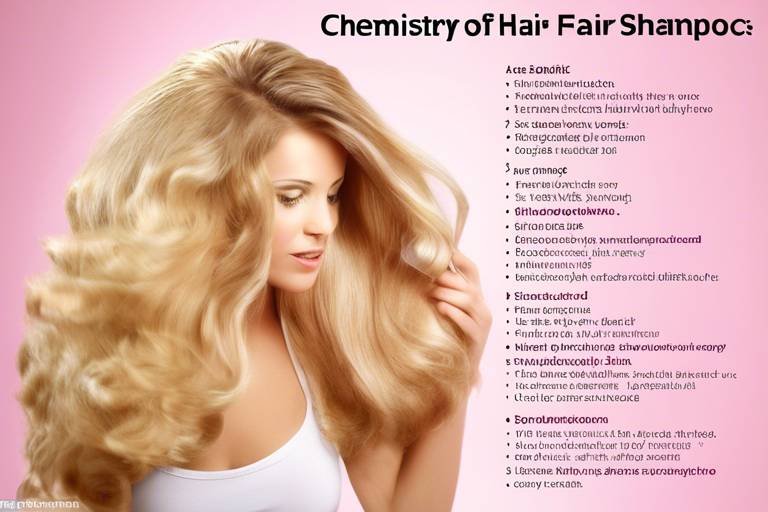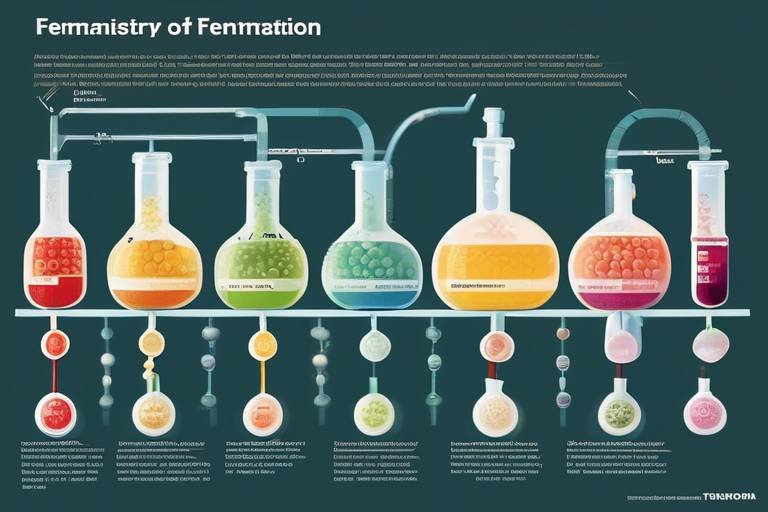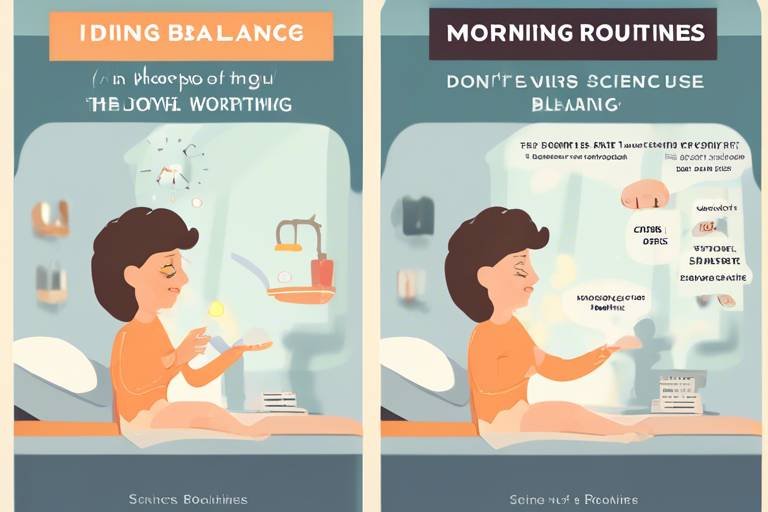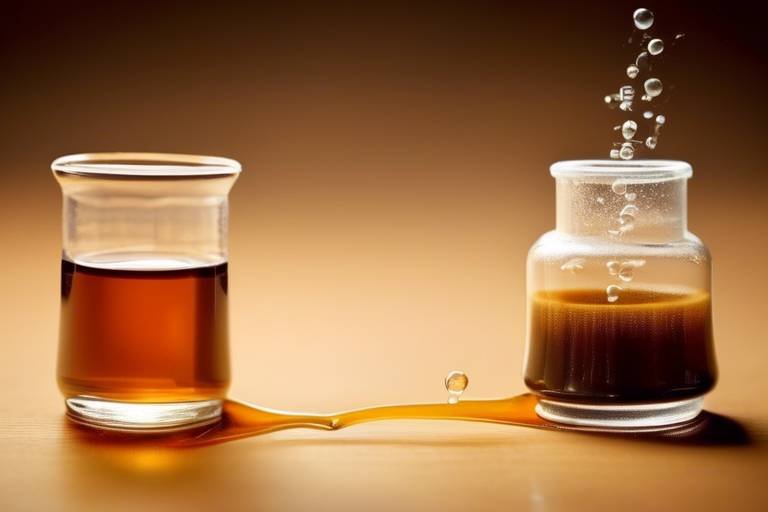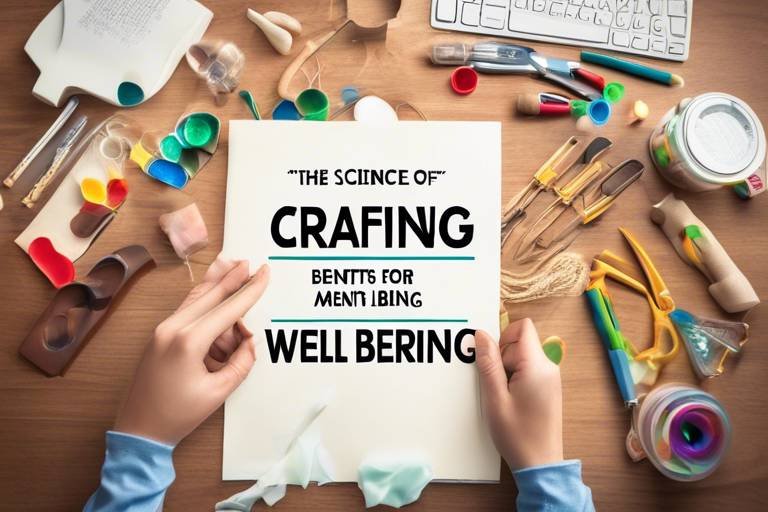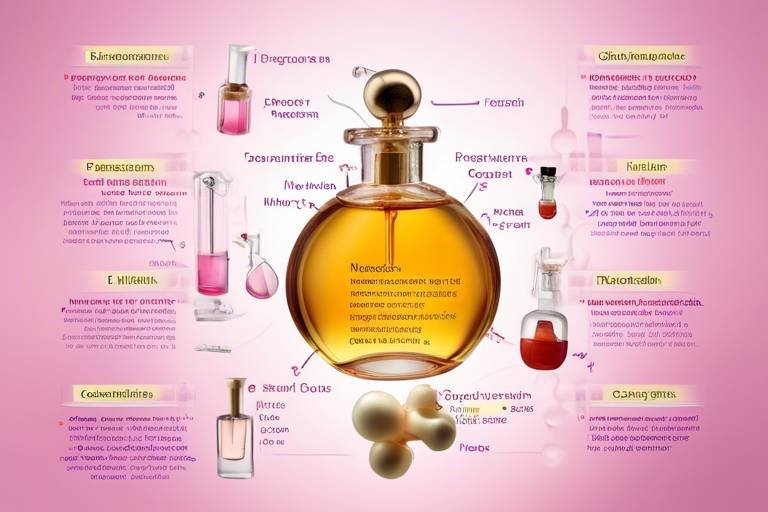The Science of Cooking Methods - Boiling vs. Steaming
This article explores the scientific principles behind boiling and steaming, comparing their effects on food texture, flavor, and nutritional value to help you choose the best cooking method for your meals.
Boiling is a cooking method that involves immersing food in water at high temperatures, typically around 100 degrees Celsius or 212 degrees Fahrenheit. When you think about boiling, you might imagine a pot of water bubbling away on the stove, eagerly waiting to transform raw ingredients into something delicious. The science of boiling is quite fascinating, as it not only cooks food but also alters its physical and chemical properties. For instance, the high temperature can cause proteins to coagulate, starches to gelatinize, and flavors to meld. However, it’s essential to understand that boiling can also lead to nutrient loss, especially in vegetables and delicate proteins.
On the other hand, steaming is a gentle cooking technique that employs vapor to cook food. Imagine the soft, fluffy clouds of steam rising from a pot, enveloping your ingredients in a warm embrace. This method is often lauded for its ability to preserve the integrity of various ingredients, maintaining their texture, color, and nutritional value. The science behind steaming involves cooking food at a lower temperature than boiling, which helps to retain moisture and nutrients. As the steam circulates around the food, it cooks evenly without the need for direct contact with water, making it a healthier option for many dishes.
The temperature and duration of boiling significantly influence the texture and flavor of food. When boiling, it’s crucial to monitor both the temperature and the cooking time to achieve the perfect result. For example, overcooking can lead to mushy vegetables or rubbery proteins, while undercooking may leave food tough and unpalatable. Here are some optimal boiling conditions for various ingredients:
| Ingredient | Boiling Time (minutes) | Optimal Temperature (°C) |
|---|---|---|
| Potatoes (cubed) | 15-20 | 100 |
| Carrots (sliced) | 5-7 | 100 |
| Eggs | 9-12 | 100 |
Boiling vegetables can lead to significant nutrient loss, particularly water-soluble vitamins such as vitamin C and some B vitamins. When vegetables are submerged in boiling water, these nutrients can leach into the cooking water, which is often discarded. To minimize nutrient degradation, consider the following strategies:
- Use the least amount of water necessary.
- Limit cooking time to the minimum required for tenderness.
- Utilize the cooking water in soups or sauces to retain some nutrients.
The boiling of proteins, such as meat and eggs, can alter their texture and moisture content. For instance, boiling meat can lead to a tougher texture as the proteins contract and lose juices. Similarly, boiled eggs can become rubbery if overcooked. Understanding the boiling process allows you to achieve the desired texture and flavor in your proteins, ensuring a satisfying meal.
Steaming requires precise temperature control and timing to achieve the desired doneness. Unlike boiling, where the food is fully submerged, steaming involves cooking food above boiling water, allowing the steam to do the work. The key is to keep the steam circulating around the food, which can be achieved with a well-fitted lid. Here are some best practices for steaming different types of food:
- Vegetables: Steam for 5-10 minutes, depending on size and type.
- Fish: Typically requires 8-10 minutes per inch of thickness.
- Rice: Use a steaming basket for about 20-30 minutes for perfect texture.
Comparing the nutritional outcomes of boiling and steaming is crucial for health-conscious cooks. Each method affects vitamins, minerals, and overall food quality differently. While boiling often results in nutrient loss due to leaching, steaming tends to preserve more nutrients, making it a preferred cooking method for many health enthusiasts.
Nutrient retention varies significantly between boiling and steaming. Studies have shown that steaming can retain up to 90% of certain vitamins, whereas boiling may only retain around 50% or less. This is particularly important for those looking to maximize the health benefits of their meals.
The flavor outcomes of boiling and steaming can differ dramatically. Boiling can sometimes lead to a dilution of flavors, especially if the cooking water is discarded. In contrast, steaming allows the natural flavors of the food to shine through, often resulting in a more vibrant and appealing dish. When making culinary choices, consider how each method influences the taste and aroma of your food.
- Which method is better for preserving nutrients? Steaming is generally better for nutrient retention compared to boiling.
- Can I steam foods that are usually boiled? Yes, most foods can be steamed, and many taste better when steamed.
- Does boiling affect the flavor of food? Yes, boiling can dilute flavors, while steaming helps maintain them.

Understanding Boiling
Boiling is one of the most fundamental cooking techniques, and it involves immersing food in water or broth that has reached its boiling point, typically around 100°C (212°F) at sea level. This method is not only straightforward but also incredibly effective for cooking a variety of ingredients, from pasta to vegetables and even proteins. The science behind boiling is fascinating; it’s all about heat transfer. When food is placed in boiling water, the heat rapidly transfers from the water to the food, causing it to cook evenly and efficiently.
One of the remarkable aspects of boiling is how it can transform the texture and flavor of food. For instance, when you boil potatoes, the starches gelatinize, resulting in a creamy interior that’s perfect for mashing. However, boiling isn’t without its drawbacks. While it can enhance the taste of certain ingredients, it can also lead to nutrient loss, particularly in vegetables that are sensitive to heat. This brings us to the importance of understanding not just how to boil, but also when to boil.
Boiling is often used for:
- Cooking grains: Such as rice, quinoa, and pasta, where the water absorbs the starches, creating a delightful texture.
- Preparing proteins: Such as eggs or chicken, where the high temperature can kill harmful bacteria.
- Softening tough vegetables: Like carrots and potatoes, making them easier to digest.
One might wonder, “Is boiling the best method for every type of food?” The answer is not a simple yes or no. While boiling is excellent for certain items, it can sometimes lead to a loss of flavor and nutrients, especially if the food is left in the water for too long. That’s why timing is crucial when boiling. For instance, leafy greens like spinach should only be boiled for a minute or two to retain their vibrant color and nutrients, while heartier vegetables like potatoes may require a longer cooking time.
In summary, boiling is a powerful cooking method that, when used correctly, can yield delicious and safe meals. Understanding the science behind it not only helps in achieving the perfect texture but also in preserving the nutritional integrity of the food. As we delve deeper into this article, we will explore the specific impacts of boiling on different types of ingredients, giving you the tools to make informed cooking decisions.

Understanding Steaming
Steaming is an age-old cooking technique that has stood the test of time, and for good reason! It involves cooking food using the vapor generated from boiling water. This method is not only simple but also incredibly effective at preserving the nutritional value of food. The beauty of steaming lies in its ability to cook food evenly while maintaining moisture and flavor, making it a favorite among health-conscious cooks.
Unlike boiling, where food is submerged in water, steaming allows food to cook in its own juices, which can enhance the overall taste and texture. Imagine a vibrant green broccoli floret, tender yet crisp, bursting with flavor and nutrients. That's the magic of steaming! This method can be applied to a variety of foods, including vegetables, seafood, and even dumplings, making it a versatile option in the kitchen.
One of the key advantages of steaming is its ability to preserve the integrity of food. The gentle heat prevents the breakdown of cell walls, which can happen during more aggressive cooking methods. As a result, steaming helps retain the natural colors, flavors, and nutrients of the ingredients. For instance, steaming vegetables can keep them bright and crunchy, whereas boiling might leave them dull and mushy. The table below summarizes the benefits of steaming compared to other cooking methods:
| Cooking Method | Nutrient Retention | Flavor Preservation | Texture |
|---|---|---|---|
| Steaming | High | Excellent | Crisp and Tender |
| Boiling | Moderate | Good | Mushy |
| Roasting | Varies | Good | Crispy |
| Frying | Low | Excellent | Crispy |
To achieve the best results when steaming, it’s essential to understand the temperature and timing required for different foods. Each ingredient has its own ideal steaming time to ensure it cooks through without losing its texture. For example, delicate vegetables like spinach require only a few minutes, while denser vegetables like carrots may need a bit longer. This precision is crucial for maximizing the health benefits of your meals.
Another significant aspect of steaming is the use of various steaming tools, from simple bamboo steamers to electric steamers. Each has its own advantages and can add a unique touch to your cooking experience. For instance, bamboo steamers are great for dumplings and can be stacked for multi-tier cooking. On the other hand, electric steamers can be set to specific times and temperatures, making them user-friendly for busy cooks.
In conclusion, steaming is a remarkable cooking method that not only brings out the best in your ingredients but also supports a healthy lifestyle. By choosing steaming over other cooking methods, you can enjoy meals that are packed with flavor and nutrients, while also being easy to prepare. So, the next time you're in the kitchen, consider reaching for the steamer instead of the pot. Your taste buds and your body will thank you!

Temperature and Time in Boiling
When it comes to boiling, the relationship between temperature and time is crucial in determining the final outcome of your dish. Boiling typically occurs at 100 degrees Celsius (212 degrees Fahrenheit) at sea level, but this can vary with altitude. At higher altitudes, the boiling point decreases, which means that cooking times may need to be adjusted. This is an essential factor to consider, especially if you're whipping up a meal in the mountains or at a higher elevation.
So, why does temperature matter? Well, the hotter the water, the faster the food cooks. However, if you boil food for too long, it can become mushy and lose its flavor. For instance, vegetables like broccoli or green beans benefit from a quick boil of just a few minutes. On the other hand, starchy foods such as pasta or potatoes might require a longer boil to achieve that perfect texture. It's all about finding the right balance!
To help you navigate this, here’s a simple table that outlines optimal boiling times for various ingredients:
| Food Item | Optimal Boiling Time |
|---|---|
| Broccoli | 2-3 minutes |
| Carrots (sliced) | 5-7 minutes |
| Pasta | 8-12 minutes |
| Potatoes (cubed) | 10-15 minutes |
| Eggs | 9-12 minutes (hard-boiled) |
Timing is everything in boiling! You can easily ruin a good dish by overcooking it. To avoid this, keep a close eye on your food and use a timer if necessary. Remember, you can always cook it a bit longer if it’s not quite done, but you can’t undo overcooking. It’s like trying to put toothpaste back in the tube—it’s just not going to happen!
Moreover, the size of your food pieces also plays a significant role in how quickly they cook. Smaller pieces will cook faster, while larger ones will take more time. For example, if you’re boiling a whole potato, it will take much longer than if you were boiling diced potatoes. The key is to cut your food into uniform sizes to ensure even cooking.
In conclusion, mastering the art of boiling requires attention to both temperature and time. With a little practice and by following the guidelines above, you can achieve perfectly cooked food that retains its flavor and texture. So, the next time you find yourself at the stove, remember: timing is everything!
- What is the best way to know when my food is done boiling?
Using a timer and checking for tenderness with a fork are great ways to ensure your food is cooked just right. - Can I reuse boiling water?
Yes, you can reuse boiling water, especially if you’re cooking similar types of food, but be mindful of flavor transfer. - Does adding salt change boiling time?
While adding salt raises the boiling point slightly, it also enhances flavor, making it worth the minor adjustment in time.

Impact on Vegetables
When it comes to cooking vegetables, the method you choose can significantly affect their nutritional value, texture, and flavor. Boiling, while a common practice in kitchens around the world, often leads to a trade-off between convenience and health. You might be wondering, how does this happen? Well, the high temperatures and prolonged exposure to water can cause vegetables to lose a substantial amount of their essential vitamins and minerals.
For instance, water-soluble vitamins like Vitamin C and several B vitamins are particularly vulnerable during the boiling process. When vegetables are submerged in boiling water, these nutrients can leach out into the water, which is often discarded after cooking. A study has shown that boiling broccoli can lead to a loss of up to 50-60% of its Vitamin C content! This could make you think twice before reaching for that pot of boiling water.
However, not all vegetables are created equal when it comes to boiling. Some might hold up better than others. For example, root vegetables like carrots and potatoes tend to retain more of their nutrients compared to leafy greens such as spinach or kale. The texture of boiled vegetables can also change dramatically; they often become softer and mushier, which might not be the desired outcome for every recipe. If you prefer a crunchier texture, boiling might not be your best friend.
To help visualize the impact of boiling on various vegetables, consider the following table:
| Vegetable | Nutrient Loss (%) | Texture After Boiling |
|---|---|---|
| Broccoli | 50-60% | Soft |
| Carrots | 30% | Crispy |
| Spinach | 40-50% | Mushy |
| Potatoes | 25% | Soft |
So, what can you do to minimize nutrient loss when boiling? Here are a few strategies:
- Use minimal water: Just enough to cover the vegetables can help reduce nutrient leaching.
- Reduce cooking time: Shorter boiling times can help preserve nutrients.
- Save the water: If you do boil vegetables, consider using the leftover water in soups or sauces to retain some of those lost nutrients.
In conclusion, while boiling can make vegetables tender and palatable, it often comes at the cost of valuable nutrients. If you’re aiming for a healthier meal, you might want to explore other cooking methods, such as steaming, which can help retain more of those precious vitamins and minerals. Remember, the way you cook can make a world of difference in your meals!

Impact on Proteins
When it comes to cooking proteins, the method you choose can have a profound impact on their texture, moisture, and flavor. Boiling proteins, such as meat, fish, and eggs, involves immersing them in water at high temperatures, which can lead to significant changes in their structure. For instance, the high heat causes the proteins to denature, meaning they unfold and lose their natural shape. This process can make proteins tougher and drier if not done correctly. Think of it like a delicate dance; if the dancers move too aggressively, they lose their rhythm and grace.
One of the primary concerns with boiling proteins is moisture loss. As proteins are boiled, water-soluble nutrients, particularly B vitamins, can leach out into the cooking water. This not only diminishes the nutritional value of the food but can also affect the overall flavor. For instance, boiling chicken may result in tender meat, but the broth left behind is often more flavorful than the chicken itself. This leads to a common culinary practice: using the leftover broth in soups or sauces to reclaim some of the lost flavors.
On the other hand, steaming proteins is a gentler method that helps retain moisture and nutrients. The steam surrounds the food, cooking it evenly without direct contact with boiling water. This method is especially beneficial for delicate proteins like fish. When steamed, fish remains flaky and moist, preserving its rich flavor and nutritional content. In contrast, overcooked fish can become rubbery and dry, losing its appeal.
Here’s a quick comparison of how boiling and steaming affect various proteins:
| Protein Type | Boiling Impact | Steaming Impact |
|---|---|---|
| Chicken | Tends to be drier, potential nutrient loss | Juicier, retains more nutrients |
| Fish | Can become rubbery if overcooked | Flaky and moist, preserves flavor |
| Eggs | Can become tough and lose moisture | Soft and creamy, retains nutrients |
In summary, the method you choose to cook proteins can significantly influence their final texture and flavor. Boiling may be quicker, but it often sacrifices moisture and nutrients, leading to a less desirable outcome. Steaming, while requiring a bit more attention to timing, usually results in a more flavorful and nutritious dish. So, the next time you’re in the kitchen, consider how you want your proteins to turn out. Are you looking for something tender and juicy? Then steaming might just be your best friend!
- Is boiling or steaming better for cooking vegetables?
Steaming is generally better for retaining nutrients in vegetables compared to boiling. - Can I boil proteins without losing flavor?
While boiling can lead to flavor loss, using the broth for soups or sauces can help reclaim some of that flavor. - How long should I steam fish for optimal results?
Typically, steaming fish for 6-10 minutes is ideal, depending on the thickness.

Temperature and Time in Steaming
Steaming is often hailed as one of the healthiest cooking methods, and for good reason! It offers a way to cook food while retaining its natural flavors and nutrients. However, the temperature and time involved in steaming are crucial factors that can make or break your dish. Unlike boiling, which can be a bit more forgiving, steaming requires a certain level of precision. Think of it as a delicate dance between heat and moisture, where timing is everything.
When steaming, the ideal temperature typically hovers around 100°C (212°F), which is the boiling point of water. This temperature is essential for creating the steam that gently cooks your food. However, maintaining the right temperature is not just about reaching that boiling point; it’s about keeping it steady throughout the cooking process. Too high a temperature can lead to overcooking, while too low may result in undercooked food. It’s like trying to keep a soufflé from collapsing—balance is key!
Now, let’s talk about time. The duration for which food is steamed varies greatly depending on the type of ingredient. For example, tender vegetables like broccoli may only need about 5-7 minutes to become perfectly tender, while denser vegetables such as carrots might require closer to 10-15 minutes. Here’s a handy table to give you a quick reference:
| Food Item | Steaming Time |
|---|---|
| Broccoli | 5-7 minutes |
| Carrots (sliced) | 10-15 minutes |
| Potatoes (cubed) | 15-20 minutes |
| Fish fillets | 8-10 minutes |
| Chicken breast | 20-25 minutes |
As you can see, the cooking time can vary significantly based on what you're preparing. It’s important to monitor your food closely, as over-steaming can lead to a mushy texture that no one enjoys. A good practice is to check for doneness a few minutes before the suggested time, especially for delicate items like fish and vegetables.
In conclusion, mastering the art of steaming requires attention to both temperature and time. By keeping a close eye on these factors, you can ensure that your meals are not only delicious but also packed with nutrients. So, the next time you decide to steam your food, remember that it’s not just about cooking; it’s about creating a perfect harmony of heat, moisture, and timing!
- What is the difference between boiling and steaming? Boiling involves immersing food in water, while steaming uses vapor to cook food, often retaining more nutrients.
- Can you steam food without a steamer? Yes! You can use a heatproof bowl or a colander over boiling water as a makeshift steamer.
- How do I know when my food is done steaming? Use a fork or knife to check for tenderness; if it goes in easily, your food is ready!

Nutritional Comparison
When it comes to cooking, the method you choose can have a profound impact on the nutritional value of your food. Both boiling and steaming are popular techniques, but they yield different results in terms of nutrient retention. Understanding these differences can help you make better choices for your meals, ensuring you get the most out of your ingredients. So, how do these two methods stack up against each other?
Boiling involves submerging food in water at high temperatures, which can lead to significant nutrient loss, especially for water-soluble vitamins like vitamin C and some B vitamins. When vegetables are boiled, for instance, they can lose up to 50% of their nutrients, depending on the duration of cooking. This happens because these vitamins leach into the boiling water, which is often discarded. So, if you’ve ever wondered why your boiled veggies seem less vibrant and flavorful, it’s because they may have lost some of their nutritional punch!
On the flip side, steaming is a gentler approach that uses vapor to cook food. This method tends to preserve the nutrients much better. Since the food is not in direct contact with water, the loss of water-soluble vitamins is minimized. Research shows that steaming can retain up to 90% of vitamins in vegetables. This means that not only do your steamed veggies look and taste better, but they also pack a more powerful nutritional wallop!
| Cooking Method | Nutrient Retention (%) | Common Nutrients Affected |
|---|---|---|
| Boiling | 50% Loss | Vitamin C, B Vitamins |
| Steaming | Up to 90% Retention | Vitamin C, B Vitamins |
It’s also crucial to consider the type of food being cooked. For example, leafy greens like spinach and kale can lose a considerable amount of their nutrients when boiled. Instead, opting for steaming can help maintain their vibrant color and rich nutrient profile. Similarly, delicate proteins like fish can also benefit from steaming, as it helps retain moisture and enhances flavor without compromising nutritional value.
However, it’s not just about the cooking method; the time and temperature play essential roles as well. Overcooking, whether by boiling or steaming, can lead to nutrient degradation. Therefore, a quick steam for a few minutes can keep your vegetables crisp and packed with flavor, while a prolonged boil can turn them into mushy, nutrient-depleted shadows of their former selves.
In conclusion, while both boiling and steaming have their places in the kitchen, steaming generally comes out on top in terms of nutrient preservation. So, the next time you’re preparing a meal, consider reaching for that steamer basket instead of a pot of boiling water. Your body will thank you for it!
- Is steaming healthier than boiling? Yes, steaming typically retains more nutrients compared to boiling, making it a healthier option for cooking vegetables and proteins.
- Can I use the water from boiling vegetables? While you can use the water for soups or stocks, it’s best to consume the vegetables themselves to get the most nutrients.
- How long should I steam vegetables? Steaming times vary by vegetable, but generally, most vegetables take between 3 to 10 minutes to cook properly while retaining their nutrients.

Retention of Nutrients
When it comes to cooking, the preservation of nutrients is a hot topic, especially for health-conscious individuals. Nutrient retention is crucial because the way we cook our food can significantly impact its nutritional value. Boiling and steaming are two popular cooking methods that affect nutrient retention differently. While boiling immerses food in water, often leading to nutrient leaching, steaming uses vapor, which can help maintain those precious vitamins and minerals.
Research shows that certain nutrients are more susceptible to loss during boiling. For instance, water-soluble vitamins like vitamin C and the B vitamins tend to dissolve in water, which means that when vegetables are boiled, a substantial portion of these vitamins can end up in the cooking water. In fact, studies have shown that boiling vegetables can lead to a nutrient loss of up to 50% or more for these sensitive vitamins. This is particularly concerning for those who rely on vegetables as a primary source of nutrients.
On the other hand, steaming is often touted as a superior method for retaining nutrients. Because the food is not submerged in water, the vitamins are less likely to leach away. For example, steaming broccoli can preserve up to 90% of its vitamin C content compared to boiling. This difference is particularly striking when you consider the health benefits of these vitamins, which play vital roles in immune function, energy production, and overall well-being.
To illustrate the differences in nutrient retention between boiling and steaming, take a look at the following table:
| Vegetable | Nutrient Loss in Boiling (%) | Nutrient Retention in Steaming (%) |
|---|---|---|
| Broccoli | 50% | 90% |
| Spinach | 60% | 85% |
| Carrots | 30% | 75% |
| Potatoes | 40% | 80% |
As you can see, the differences are quite significant! This highlights the importance of choosing the right cooking method, especially if you aim to maximize your nutrient intake. Additionally, the cooking time also plays a crucial role in nutrient retention. The longer you cook your food, the more nutrients you risk losing, regardless of the method. Therefore, it’s essential to find that sweet spot where your food is cooked to perfection without sacrificing its nutritional value.
In conclusion, if you're looking to preserve the nutrient content of your meals, steaming may be the way to go. Not only does it help retain more vitamins and minerals, but it also enhances the natural flavors of the food without the need for excess fats or oils. So next time you’re in the kitchen, consider reaching for that steamer instead of the boiling pot. Your body will thank you!
1. Does boiling destroy all nutrients in food?
No, boiling does not destroy all nutrients, but it can lead to significant losses, especially of water-soluble vitamins. The extent of nutrient loss depends on the type of food and the duration of boiling.
2. Is steaming better than boiling for all vegetables?
While steaming generally preserves more nutrients than boiling for most vegetables, some vegetables may still benefit from boiling, especially if they are tough and require longer cooking times. It's best to consider the specific vegetable and cooking method.
3. Can I reuse boiling water for soups or sauces?
Yes, you can reuse the boiling water to make soups or sauces, as it contains some nutrients that leached out of the vegetables. However, be mindful that it may also contain some bitterness or strong flavors from the vegetables.
4. How can I minimize nutrient loss when boiling?
To minimize nutrient loss when boiling, you can try using less water, cooking for a shorter time, and covering the pot to retain heat and moisture.

Flavor Profiles
When it comes to cooking, the flavor profile of your food can be dramatically influenced by the method you choose. Boiling and steaming may seem similar at first glance, but they create distinct culinary experiences that can elevate or diminish the taste of your ingredients. Let’s dive into how each method affects flavor, and why it matters for your meals.
Boiling, for instance, is a method that uses high heat to cook food quickly. This rapid cooking can lead to a loss of flavor, especially in delicate ingredients. When you boil vegetables, for example, the intense heat can leach out their natural sugars and flavors into the water. This is why many chefs recommend using the least amount of water necessary and even suggest saving that water for soups or sauces to retain some of those lost flavors. The boiling water essentially acts like a flavor thief, stealing the essence of your ingredients.
On the other hand, steaming is a gentler approach that allows food to retain much of its inherent flavor. By cooking with vapor rather than direct contact with boiling water, steaming helps preserve the natural oils and essences of the food. This method is particularly beneficial for vegetables like broccoli and carrots, which can maintain their bright, fresh flavors and vibrant colors when steamed. The steam envelops the food, creating a moist environment that encourages the ingredients to cook evenly without losing their unique taste.
To illustrate the differences in flavor outcomes, consider the following table:
| Cooking Method | Flavor Retention | Common Ingredients |
|---|---|---|
| Boiling | Lower (flavors leach into water) | Pasta, potatoes, some vegetables |
| Steaming | Higher (flavors preserved) | Vegetables, fish, dumplings |
Moreover, the flavor profiles of proteins can also be affected by these cooking methods. Boiling meat can sometimes result in a bland taste, as the high heat can draw out juices and flavors into the cooking water. Conversely, steaming meat keeps it moist and allows it to cook in its own juices, enhancing its flavor. This is particularly true for fish, which can become dry and flavorless when boiled but remains tender and flavorful when steamed.
In conclusion, the choice between boiling and steaming can significantly impact the flavor of your dishes. If you’re aiming for a vibrant, flavorful meal, steaming might be your best bet. However, if you’re in a hurry and need to boil, just remember to make the most of that cooking water! With a little creativity, you can turn what seems like a flavor loss into an opportunity for deliciousness in your next culinary adventure.
- What is the best method for cooking vegetables to retain flavor? Steaming is generally preferred as it preserves the flavor and nutrients better than boiling.
- Can I use boiling water for cooking pasta and then reuse it? Absolutely! The starches released into the water can enhance the flavor of soups and sauces.
- Is steaming healthier than boiling? Yes, steaming often retains more nutrients compared to boiling, which can leach vitamins into the water.
Frequently Asked Questions
- What is the main difference between boiling and steaming?
Boiling involves immersing food in water at high temperatures, while steaming uses vapor to cook food. This fundamental difference affects the texture, flavor, and nutritional value of the ingredients.
- Which method is better for preserving nutrients in vegetables?
Steaming is generally better for preserving nutrients in vegetables compared to boiling. Boiling can lead to significant nutrient loss, particularly water-soluble vitamins, as they leach into the cooking water.
- Can boiling vegetables make them taste better?
While boiling can enhance the flavor of some vegetables, it often results in a softer texture and may cause nutrient loss. For a more vibrant taste and texture, consider steaming or sautéing instead.
- How does boiling affect the texture of proteins like meat?
Boiling can alter the texture of proteins, making them firmer or even rubbery if overcooked. It also affects moisture levels, which can lead to drier meat. Steaming, on the other hand, helps retain moisture and tenderness.
- Is it possible to overcook food when steaming?
Yes, it is possible to overcook food when steaming. Precise timing is essential to achieve the desired doneness without compromising texture or flavor. Always monitor cooking times closely for the best results.
- What are the health benefits of steaming food?
Steaming retains more nutrients and flavor compared to boiling, making it a healthier cooking method. It also requires no added fats, which can help with weight management and heart health.
- Can I use the water from boiling vegetables for anything?
Absolutely! The water used for boiling vegetables is often rich in nutrients. You can use it as a base for soups, sauces, or even to water your plants for an extra nutrient boost!
- Are there specific foods that are better suited for boiling?
Foods like pasta, potatoes, and certain grains are well-suited for boiling. These foods benefit from immersion in water to achieve the right texture and doneness.
- What cooking method is recommended for delicate foods?
Steaming is recommended for delicate foods such as fish and certain vegetables. This method gently cooks without the risk of breaking apart or losing moisture.






